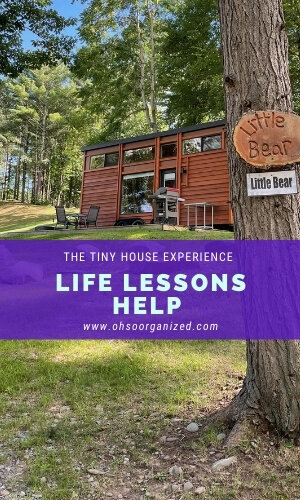Loss is part of the human experience. It’s one of the things we have in common with each other. When we lose someone we love, we often want to hold onto their physical possessions to remind us of them. In most situations, keeping some meaningful treasures is comforting. But what happens when your deceased loved one’s stuff overwhelms you? Maybe you are the person who is responsible for deciding what to do with their possessions. Perhaps all of their things have landed in your home, and you don’t have space, time, or energy to edit them. Maybe you’re still grieving, and it feels impossible or too soon to choose. I get it. I’ve been there personally and have walked the road with clients as they’ve faced similar circumstances.
It’s been seven months since my mom passed away. I miss her so much. I completed the editing and dispossessing process. Her lifetime of things, including her home of almost 60 years, has been sold, given to family members, donated, or discarded. I kept some furniture, art, books, jewelry, photos, memorabilia, and documents. There are still a few things I need to decide about. But mostly, her possessions and life are settled.
Beyond her stuff and physical presence, she remains with me in other ways. She visits me in my dreams. When I hear the music of Bach, Mozart, or musicals like The Sound of Music, I think of her. More recently, I was reminded about the power of the olfactory sense, which can transport us to another time in an instant. I hope my story will help you as you journey on your letting go path.
The Pine Needles
I am obsessed with the smell of the pines when I trek down the block. It’s as if I’m a huntress, hunting the scent. Several months ago, when I walked, I only smelled the pine if the wind blew in a particular way. The smell was fleeting. It was there one step and gone the next. I would back step, trying to get “it” again, but the aroma was gone.
Why am I so obsessed?
I have a memory from age six or seven. My parents took my siblings and me to a nature preserve for the weekend. Our car was packed with sleeping bags, slabs of wax for the lanterns, coolers, cots, and our dog, Sandy. They rented a lean-to, a three-sided, roofed structure, for our stay.
As we entered the park and drove up the road, tall, gracious pine trees marked the path on either side. My mom had my dad stop the car. She insisted we all gaze at the trees, open our windows, and take in their beautiful fragrance. My mom loved the smell. As we stood, I could hear her inhale the scent as she breathed in deeply and smiled. For those few minutes, the five of us stared and smelled as we enjoyed the moment. Whenever I smell fresh pine, I think of her.
On my walks down my block, I try to get a whiff of the trees. And every so often, I catch it. Then a few weeks ago, I noticed the dried pine needles falling in bunches to the ground. With their release came a concentrated scent. I’d walk, and there was the smell. I felt transported back to the time I had that moment with my mom so many decades ago.
She’s gone now. She left this year in March at 92 years young. But as I wander down the block, kicking the pine needles as I walk, it makes their fragrance even more intense. Gratitude and calm fill my being as I activate the aroma and feel my mom’s presence, strong like the scent of the dried pine needles.
“Gently let go when you can.”
For those of you that have lost a loved one, my heart goes out to you. If you are overwhelmed and struggling with letting go of physical possessions, I offer you this. Can you keep a few treasures and physical reminders? Can you allow the rest to move on? Your loved one’s memory will be with you in other ways through your stories, dreams, scents, sounds, and more. They wouldn’t want you to be overwhelmed or feel burdened by their stuff. Gently let go when you can.
Besides material possessions, what other ways keep you connected to your loved ones who have passed? I’d love to hear your thoughts. I invite you to join the conversation.




















